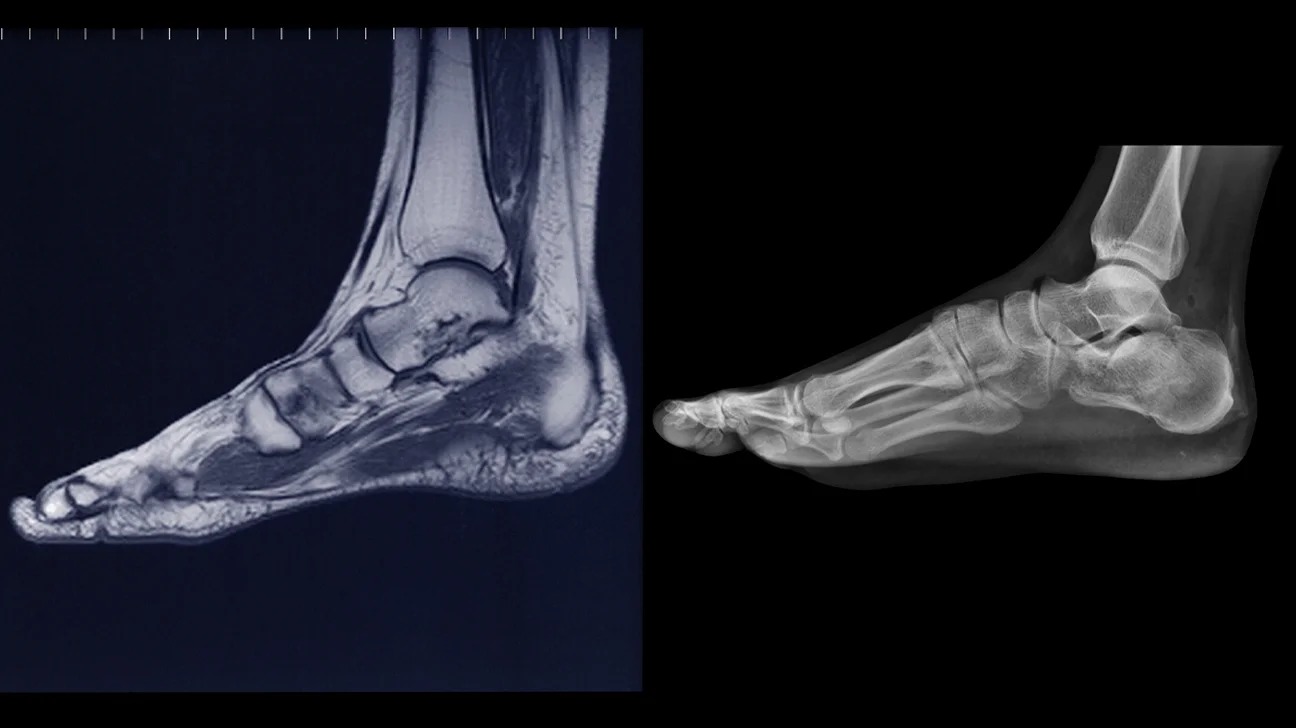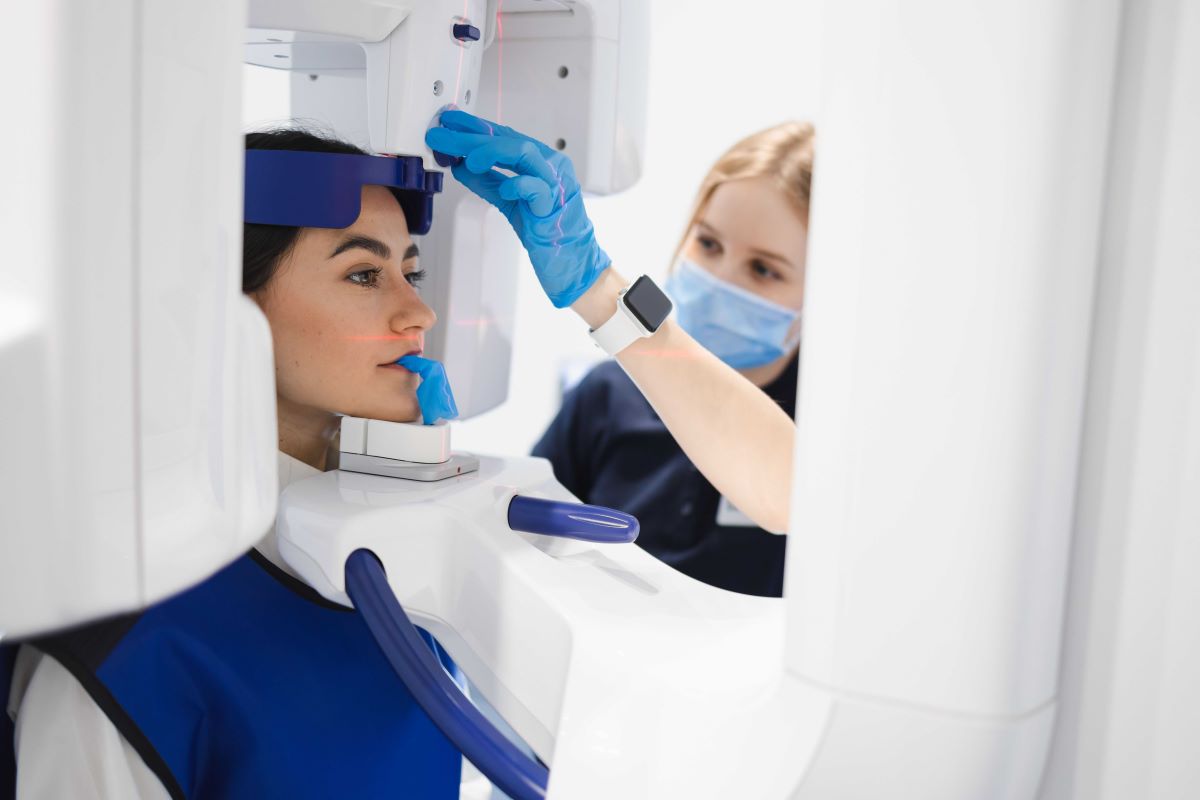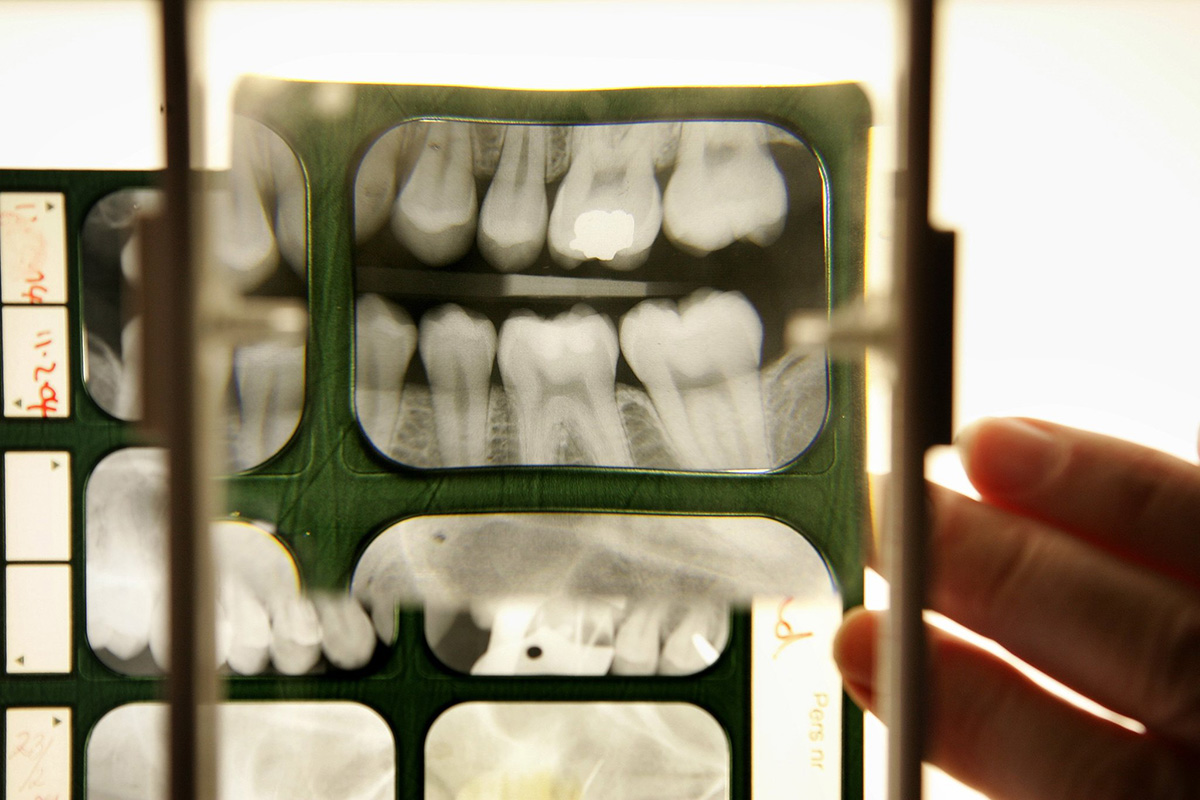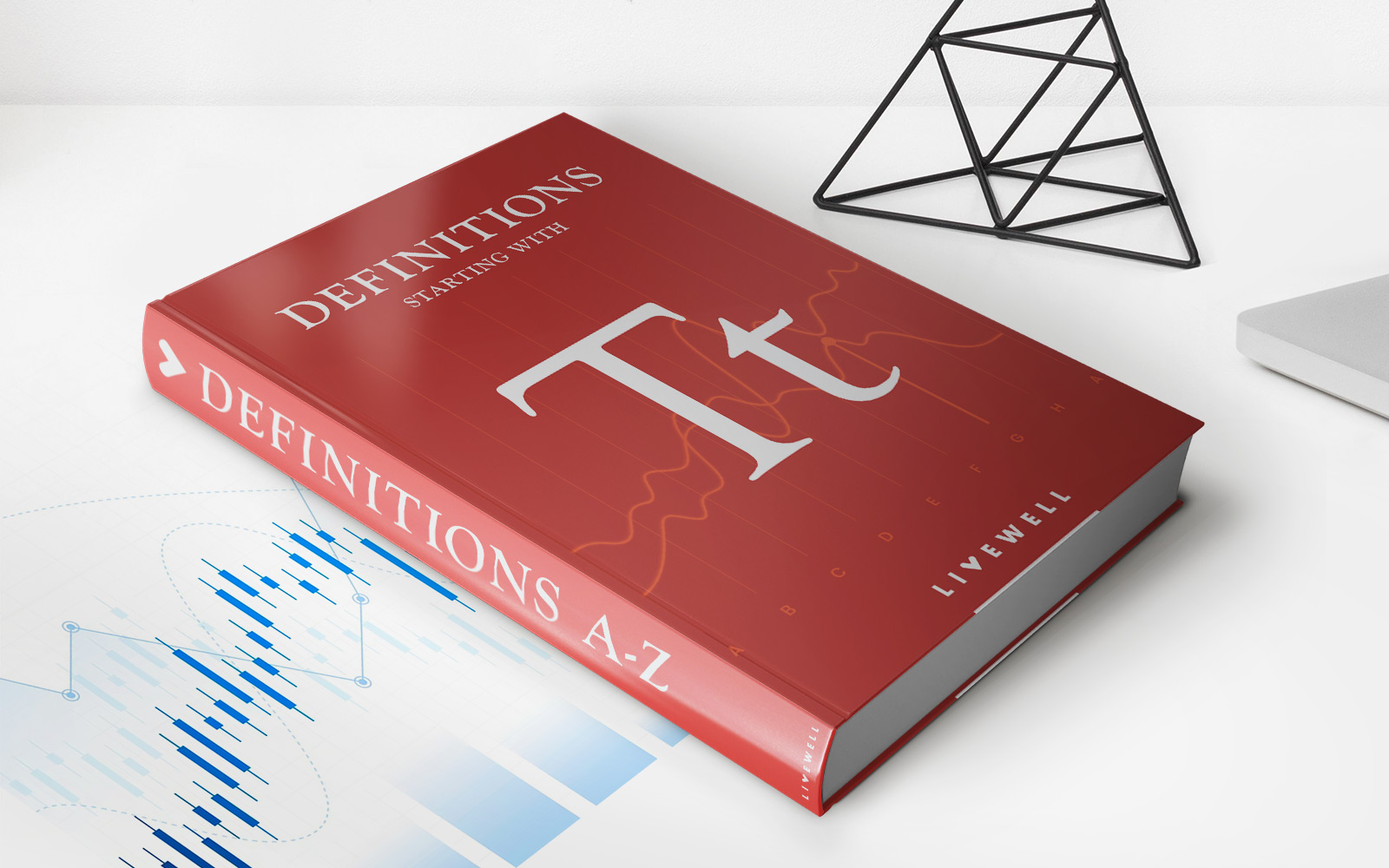

Finance
How Much Is A Chest X-Ray With Insurance?
Published: November 18, 2023
Find out how much a chest X-ray costs with insurance and manage your finances effectively. Get the information you need to make informed financial decisions.
(Many of the links in this article redirect to a specific reviewed product. Your purchase of these products through affiliate links helps to generate commission for LiveWell, at no extra cost. Learn more)
Table of Contents
Introduction
When it comes to maintaining good health, diagnostic tests are an essential part of the equation. One such test that is commonly utilized in healthcare is the chest X-ray. Chest X-rays provide valuable information about the condition of the lungs and surrounding structures, aiding in the diagnosis and monitoring of various respiratory disorders, injuries, and diseases.
For many individuals, the cost of medical procedures, including chest X-rays, can be a significant concern. This is where insurance coverage plays a crucial role. Understanding how insurance impacts the cost of a chest X-ray can help individuals make informed decisions about their healthcare and financial well-being.
This article will delve into the world of chest X-rays, explain the role insurance plays in healthcare costs, explore the factors that can influence the cost of a chest X-ray, shed light on how insurance coverage affects these costs, and provide useful tips for minimizing expenses with insurance.
So, if you’re curious about how much a chest X-ray with insurance might cost or want to learn how to maximize your insurance coverage for diagnostic tests, read on!
Understanding Chest X-Rays
A chest X-ray is a diagnostic imaging test that uses low-dose radiation to create images of the structures within the chest, including the heart, lungs, blood vessels, ribs, and diaphragm. It is a non-invasive procedure that is commonly performed to evaluate and diagnose a wide range of conditions affecting the respiratory system.
During a chest X-ray, the patient stands in front of a specialized X-ray machine, and a technologist positions a digital detector behind the patient’s back while adjusting the patient’s arms and body to capture different views. The X-ray machine emits a controlled amount of radiation, which passes through the chest and creates an image on the detector. This image is then interpreted by a radiologist, who identifies any abnormalities or signs of disease.
Chest X-rays can provide valuable information about various respiratory conditions, such as pneumonia, lung cancer, collapsed lungs, fluid accumulation around the lungs, and many others. They can also be used to monitor the progression of certain diseases, assess the effectiveness of treatments, and aid in surgical planning.
It’s important to note that a chest X-ray is just one tool in the diagnostic arsenal, and it may not provide a definitive diagnosis on its own. Additional tests, such as blood work or more advanced imaging techniques like CT scans or MRI, may be necessary to further evaluate any abnormalities detected on the chest X-ray.
The procedure itself is relatively quick and painless, usually lasting only a few minutes. Patients are typically asked to remove any clothing or accessories that could interfere with the X-ray, and they may be required to hold their breath for a few seconds during the image capture to minimize blurriness.
Now that we have a basic understanding of chest X-rays, let’s explore how insurance coverage factors into the cost of these diagnostic tests.
The Role of Insurance in Healthcare Costs
In today’s healthcare landscape, insurance plays a vital role in managing the financial burden of medical expenses. It helps individuals access necessary medical care while providing a safety net for unexpected healthcare costs. Understanding the role of insurance in healthcare costs is crucial for making informed decisions about the utilization of healthcare services, including diagnostic tests like chest X-rays.
Health insurance coverage typically involves individuals paying a monthly premium to their insurance provider. In return, the insurance plan offers benefits that cover a portion of the cost of medical services, including doctor visits, medications, hospital stays, and diagnostic tests. The specific coverage and cost-sharing arrangements vary depending on the insurance plan, which can be obtained through employers, government programs, or purchased individually.
When it comes to chest X-rays and other medical procedures, insurance coverage can help alleviate the financial burden by reducing out-of-pocket costs for the insured individual. Without insurance, the full cost of a chest X-ray would typically be borne by the patient, which can be a significant expense.
Insurance providers negotiate discounted rates with healthcare providers, including radiology facilities, which means that individuals with insurance may pay a lower price for their chest X-rays compared to those without insurance. The insurance plan usually covers a percentage of the cost, while the remaining amount may be subject to the individual’s deductible, co-payment, or co-insurance. These cost-sharing mechanisms help individuals share in the cost of their care while providing a financial safety net.
Additionally, insurance plans often have a network of preferred providers. Seeking care from in-network providers can result in lower out-of-pocket costs for the insured individual. It’s important to review the insurance plan’s network to ensure that the chosen radiology facility or healthcare provider is in-network to maximize the insurance coverage and reduce expenses.
The role of insurance in healthcare costs extends beyond the cost-sharing arrangements. It also includes the negotiation of rates for medical services and the management of claims and reimbursements. Insurance providers work with healthcare providers to establish reimbursement rates for services, including chest X-rays. These negotiated rates are often lower than the standard charges, helping to control the overall cost of healthcare for both the insurance company and the patient.
Understanding how insurance impacts the cost of a chest X-ray is crucial for individuals to make informed decisions about their healthcare and financial well-being. In the next section, we will explore the factors that can influence the cost of a chest X-ray and how insurance coverage can affect these costs.
Factors Affecting the Cost of a Chest X-Ray
When it comes to the cost of a chest X-ray, several factors can influence the final price. Understanding these factors can help individuals better comprehend the potential expenses associated with this diagnostic test.
1. Medical Facility and Geographic Location: The cost of a chest X-ray can vary depending on the medical facility where the test is performed. Different hospitals, diagnostic centers, and radiology practices may have different pricing structures. Moreover, the geographic location can also impact the cost, as healthcare costs tend to vary between regions.
2. Type of Facility: The type of medical facility can also affect the cost of a chest X-ray. For example, a hospital setting might have higher costs compared to an independent radiology practice or imaging center due to additional overhead expenses.
3. In-Network vs. Out-of-Network Providers: Insurance coverage is a significant influencer of the cost of a chest X-ray. In-network providers, those who have contracted with the insurance company, typically offer lower rates as compared to out-of-network providers. It is important to verify whether the chosen facility is in-network to maximize insurance benefits and minimize expenses.
4. Additional Services: In some cases, additional services may be required along with the chest X-ray, such as image interpretation by a radiologist or the need for contrast agents. These additional services can add to the overall cost of the test.
5. Insurance Plan: The specific insurance plan and its coverage terms play a significant role in determining the cost of a chest X-ray. Factors such as deductibles, co-payments, and co-insurance can impact the amount the insured individual is responsible for paying out-of-pocket.
6. Uninsured or Self-Pay Prices: For individuals without insurance, the cost of a chest X-ray may be higher as they do not benefit from negotiated rates. In these cases, medical facilities may offer self-pay prices or discounts to help individuals manage the cost.
It is important to note that the exact cost of a chest X-ray can vary significantly based on these factors. It is advisable to contact the medical facility or check with the insurance provider to obtain an estimate of the cost before undergoing the procedure.
Now that we have explored the factors that can influence the cost of a chest X-ray, let’s move on to understanding how insurance coverage impacts these costs.
How Insurance Coverage Impacts Chest X-Ray Costs
Insurance coverage plays a significant role in determining the cost individuals pay for a chest X-ray. Let’s delve into how insurance coverage affects the expenses associated with this diagnostic test.
First and foremost, insurance coverage helps individuals by negotiating discounted rates with healthcare providers, including radiology facilities. These negotiated rates are often lower than the standard charges, resulting in cost savings for the insured individual. When an individual with insurance undergoes a chest X-ray, they can expect to pay a reduced price compared to someone without insurance.
Insurance plans typically cover a portion of the cost of a chest X-ray, which can vary based on the specific plan and its coverage terms. The remaining amount may be subject to cost-sharing mechanisms such as deductibles, co-payments, or co-insurance. For example, an insurance plan may cover 80% of the cost of a chest X-ray, while the individual is responsible for the remaining 20%. It is essential to refer to the insurance plan to understand the specific coverage and payment obligations.
In addition to cost-sharing, insurance coverage also includes the concept of “in-network” providers. Insurance companies have a network of preferred providers with whom they have negotiated agreements. Seeking care from in-network providers allows individuals to benefit from discounted rates and lower out-of-pocket expenses. It is crucial to check with the insurance provider or review the provider network to ensure that the chosen radiology facility or healthcare provider is in-network.
It’s important to note that insurance coverage can differ significantly between plans and providers. Some insurance plans may require pre-authorization or referrals from a primary care provider for diagnostic tests like chest X-rays. Understanding the coverage and requirements of the insurance plan is essential to avoid unexpected costs or pre-authorization denials.
Individuals with insurance coverage have the advantage of accessing negotiated rates, cost-sharing arrangements, and in-network providers, all of which work together to minimize the cost of a chest X-ray. By utilizing insurance benefits effectively, individuals can significantly reduce their out-of-pocket expenses for this diagnostic test.
Now that we have explored how insurance coverage impacts the cost of a chest X-ray, let’s move on to discussing the average cost of a chest X-ray with insurance coverage.
Average Cost of a Chest X-Ray with Insurance
The average cost of a chest X-ray with insurance coverage can vary based on several factors, including the specifics of the insurance plan, the provider network, and the negotiated rates. While it is challenging to determine the exact cost without considering these factors, we can provide a general idea of the average expenses associated with a chest X-ray.
On average, the cost of a chest X-ray with insurance coverage can range from $50 to $300, depending on the location, facility type, and the individual’s specific insurance plan. These numbers are just estimates and can vary significantly. In certain cases, with high-deductible insurance plans, individuals might have to pay the full cost of the X-ray until they meet their deductible. It is important to review the insurance plan’s coverage terms and contact the insurance provider or the specific radiology facility to obtain an accurate estimate of the cost.
It’s crucial to remember that the cost of a chest X-ray is impacted by factors such as additional services, deductibles, co-payments, and co-insurance. These elements can vary from one insurance plan to another. Some insurance plans may fully cover the cost of the chest X-ray, while others may require the individual to bear a certain percentage of the cost.
It is advisable to review the insurance plan’s summary of benefits or consult with the insurance provider to understand the specific coverage and financial responsibilities. Additionally, checking whether the chosen radiology facility or healthcare provider is in-network can help individuals maximize their insurance benefits and minimize out-of-pocket costs.
Keep in mind that the cost of a chest X-ray can also be influenced by the specific reason for the test and the presence of any additional medical conditions or complications. In some cases, insurance plans may require pre-authorization or referrals for certain diagnostic tests. It’s important to be aware of these requirements to avoid unexpected costs or denials of coverage.
By understanding the average cost of a chest X-ray with insurance coverage, individuals can make informed decisions about their healthcare decisions and finances. Now, let’s explore some tips for minimizing costs when it comes to chest X-rays with insurance coverage.
Tips for Minimizing Costs with Insurance
While insurance coverage can help reduce the cost of a chest X-ray, there are several strategies individuals can employ to further minimize their expenses. Consider these tips for maximizing insurance benefits and managing costs when it comes to chest X-rays:
1. Choose In-Network Providers: Opt for radiology facilities and healthcare providers that are within your insurance plan’s network. In-network providers have established agreements with insurance companies, resulting in lower negotiated rates and reduced out-of-pocket costs for the insured individual.
2. Understand Your Insurance Policy: Familiarize yourself with the details of your insurance policy, including the coverage terms, deductibles, co-payments, and co-insurance. Knowing these specifics will help you understand your financial responsibilities and make informed decisions about your healthcare.
3. Pre-Authorize when Required: If your insurance plan requires pre-authorization or referrals for diagnostic tests like chest X-rays, make sure to follow the necessary steps. Failure to obtain pre-authorization could result in partial or no coverage, leaving you responsible for the full cost of the procedure.
4. Review Billing Statements: Carefully review your insurance statements and billing records to ensure accuracy. Mistakes or incorrect charges could lead to unnecessary expenses. If you notice any discrepancies, promptly contact your insurance provider or the medical facility to address the issue.
5. Utilize Preventive Care Benefits: Some insurance plans offer preventive care benefits, including chest X-rays, at no additional cost to the insured individual. Take advantage of these benefits to minimize out-of-pocket expenses for routine screenings and early detection of potential health issues.
6. Consider Telemedicine: Telemedicine or virtual healthcare options may be available through your insurance plan. Explore if you can discuss your symptoms or concerns with a healthcare professional remotely, potentially avoiding the need for an in-person chest X-ray if not deemed necessary.
7. Shop Around: If your insurance plan allows for flexibility in choosing medical providers, consider comparing the cost of chest X-rays at different facilities. While quality should be prioritized, researching and acquiring estimates from multiple providers can help you make an informed decision while minimizing expenses.
8. Consult with Your Doctor: Before scheduling a chest X-ray, consult with your primary care physician or specialist. They can assess the necessity of the test, discuss alternative options, and provide guidance on finding cost-effective solutions within your insurance coverage.
By implementing these tips, individuals can optimize their insurance benefits, reduce their out-of-pocket expenses, and effectively manage the costs associated with chest X-rays.
As we conclude, it is important to remember that every insurance plan is unique, and it is vital to consult your specific insurance provider or policy for precise information on coverage and cost-sharing.
Conclusion
Chest X-rays are an integral part of medical diagnostics, providing valuable insights into the condition of the lungs and surrounding structures. Understanding the role of insurance in healthcare costs and how it impacts the expenses associated with chest X-rays is vital for individuals seeking affordable healthcare solutions.
Insurance coverage plays a significant role in reducing the cost of a chest X-ray. Insurance plans negotiate discounted rates with healthcare providers, allowing individuals to pay a reduced price for the test. Cost-sharing mechanisms, such as deductibles, co-payments, and co-insurance, further help individuals manage the financial burden associated with diagnostic tests.
Various factors, including the medical facility, geographic location, type of facility, and insurance plan, can influence the cost of a chest X-ray. By choosing in-network providers, understanding insurance policy details, pre-authorizing when required, and reviewing billing statements, individuals can actively minimize their expenses.
It is important to familiarize oneself with the coverage terms of the insurance policy and consult with healthcare professionals to navigate the healthcare system effectively, obtain accurate estimates, and make informed decisions.
While we have provided an overview of the average cost of a chest X-ray with insurance coverage, it is essential to note that the specific costs can vary significantly based on individual circumstances and insurance plan details.
By utilizing the tips outlined in this article, individuals can maximize their insurance benefits, minimize out-of-pocket expenses, and ensure access to necessary medical procedures like chest X-rays without experiencing undue financial strain.
Remember, each insurance plan has its own unique coverage terms and benefits, so it is crucial to consult your insurance provider or policy to obtain precise information specific to your situation.
By staying informed and proactive, individuals can navigate the complex landscape of healthcare costs and ensure their continued well-being without compromising their financial stability.














